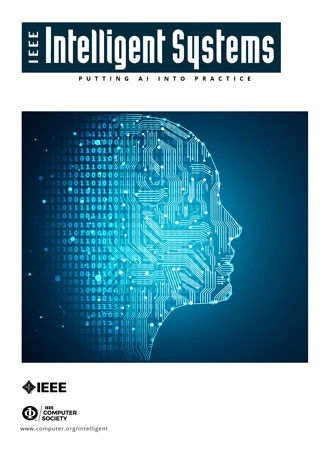知识图上的类别感知符号多跳推理
IF 6.1
3区 计算机科学
Q1 COMPUTER SCIENCE, ARTIFICIAL INTELLIGENCE
引用次数: 0
摘要
多跳推理在知识图的研究和应用中是必不可少的。目前的方法依赖于特定的KG实体,而人类的认知是在更抽象的层面上运作的。本文提出了一种基于类别感知规则的符号多跳推理方法。具体来说,给定一个KG,CRule首先对实体进行分类,并构建一个类别感知的KG;在五个数据集上的实验表明,CRule简单有效,并结合了符号和神经网络方法的优点。它克服了符号推理的复杂性限制,可以对超过300000条边的KGs进行推理,并且比神经网络模型的效率高出三倍。本文章由计算机程序翻译,如有差异,请以英文原文为准。
CRule: Category-Aware Symbolic Multihop Reasoning on Knowledge Graphs
Multihop reasoning is essential in knowledge graph (KG) research and applications. Current methods rely on specific KG entities, while human cognition operates at a more abstract level. This article proposes a category-aware rule-based (CRule) approach for symbolic multihop reasoning. Specifically, given a KG, CRule first categorizes entities and constructs a category-aware KG; it then uses rules retrieved from the categorized KG to perform multihop reasoning on the original KG. Experiments on five datasets show that CRule is simple, is effective, and combines the advantages of symbolic and neural network methods. It overcomes symbolic reasoning’s complexity limitations, can perform reasoning on KGs of more than 300,000 edges, and can be three times more efficient than neural network models.
求助全文
通过发布文献求助,成功后即可免费获取论文全文。
去求助
来源期刊

IEEE Intelligent Systems
工程技术-工程:电子与电气
CiteScore
13.80
自引率
3.10%
发文量
122
审稿时长
1 months
期刊介绍:
IEEE Intelligent Systems serves users, managers, developers, researchers, and purchasers who are interested in intelligent systems and artificial intelligence, with particular emphasis on applications. Typically they are degreed professionals, with backgrounds in engineering, hard science, or business. The publication emphasizes current practice and experience, together with promising new ideas that are likely to be used in the near future. Sample topic areas for feature articles include knowledge-based systems, intelligent software agents, natural-language processing, technologies for knowledge management, machine learning, data mining, adaptive and intelligent robotics, knowledge-intensive processing on the Web, and social issues relevant to intelligent systems. Also encouraged are application features, covering practice at one or more companies or laboratories; full-length product stories (which require refereeing by at least three reviewers); tutorials; surveys; and case studies. Often issues are theme-based and collect articles around a contemporary topic under the auspices of a Guest Editor working with the EIC.
 求助内容:
求助内容: 应助结果提醒方式:
应助结果提醒方式:


